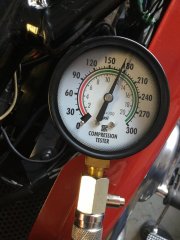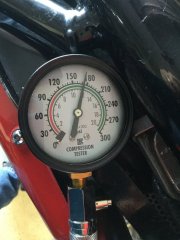- Joined
- Dec 30, 2003
- Messages
- 3,657
I’ve been riding my ‘72 combat for 22 years and my sense of diagnosis isn’t that good anymore. Just did a leakdown and compression this morning.
Leakdown show 95% leakage both sides
Compression 180lbs both sides after six kick through s with throttle wide open and cold engine.
Rabers did black diamond valves, springs seats 8,000 miles ago.
.040” overbore on the cylinders. 8,000 miles on the rings and 38,000 miles on the pistons.
Conclusion?
Leakdown show 95% leakage both sides
Compression 180lbs both sides after six kick through s with throttle wide open and cold engine.
Rabers did black diamond valves, springs seats 8,000 miles ago.
.040” overbore on the cylinders. 8,000 miles on the rings and 38,000 miles on the pistons.
Conclusion?


